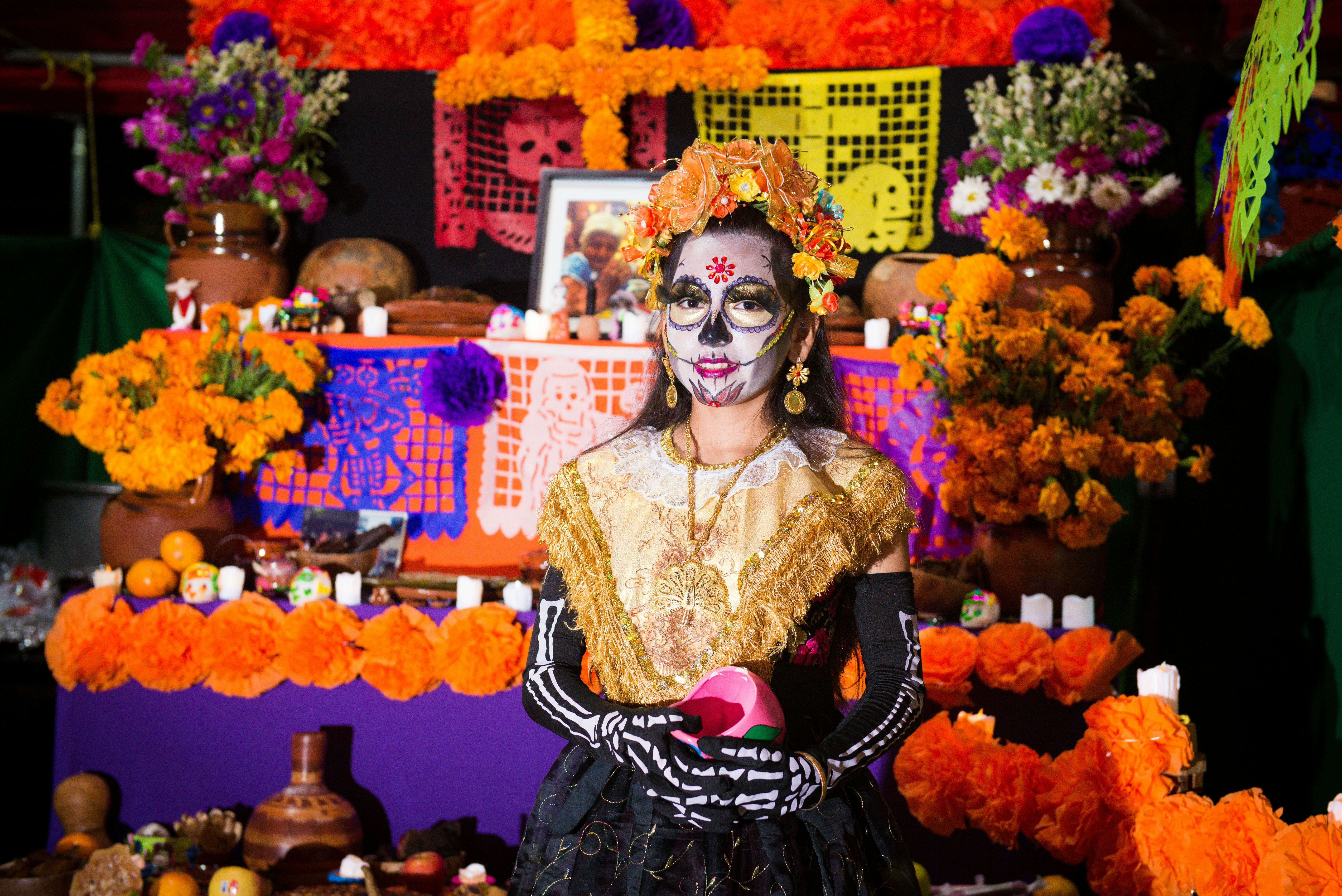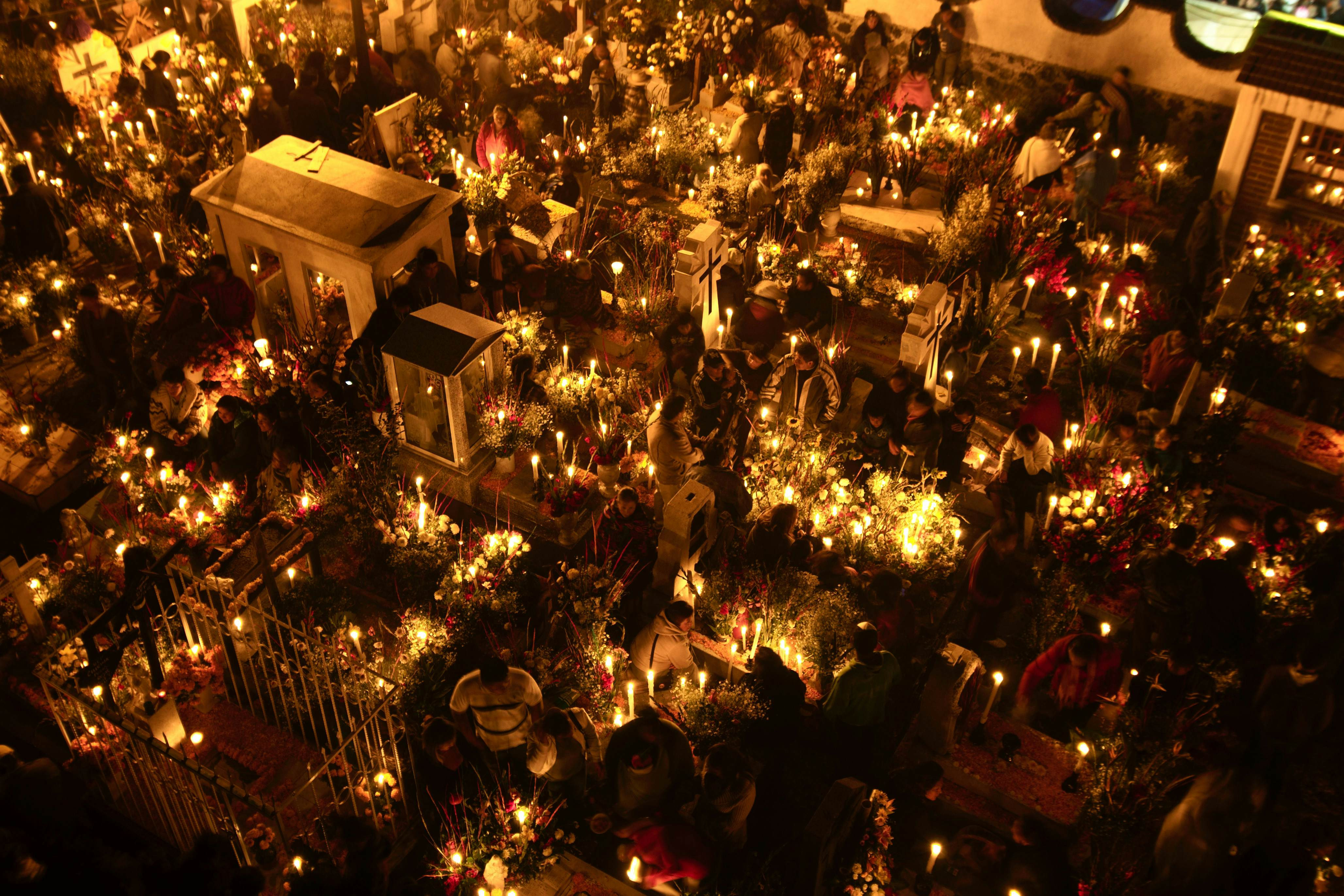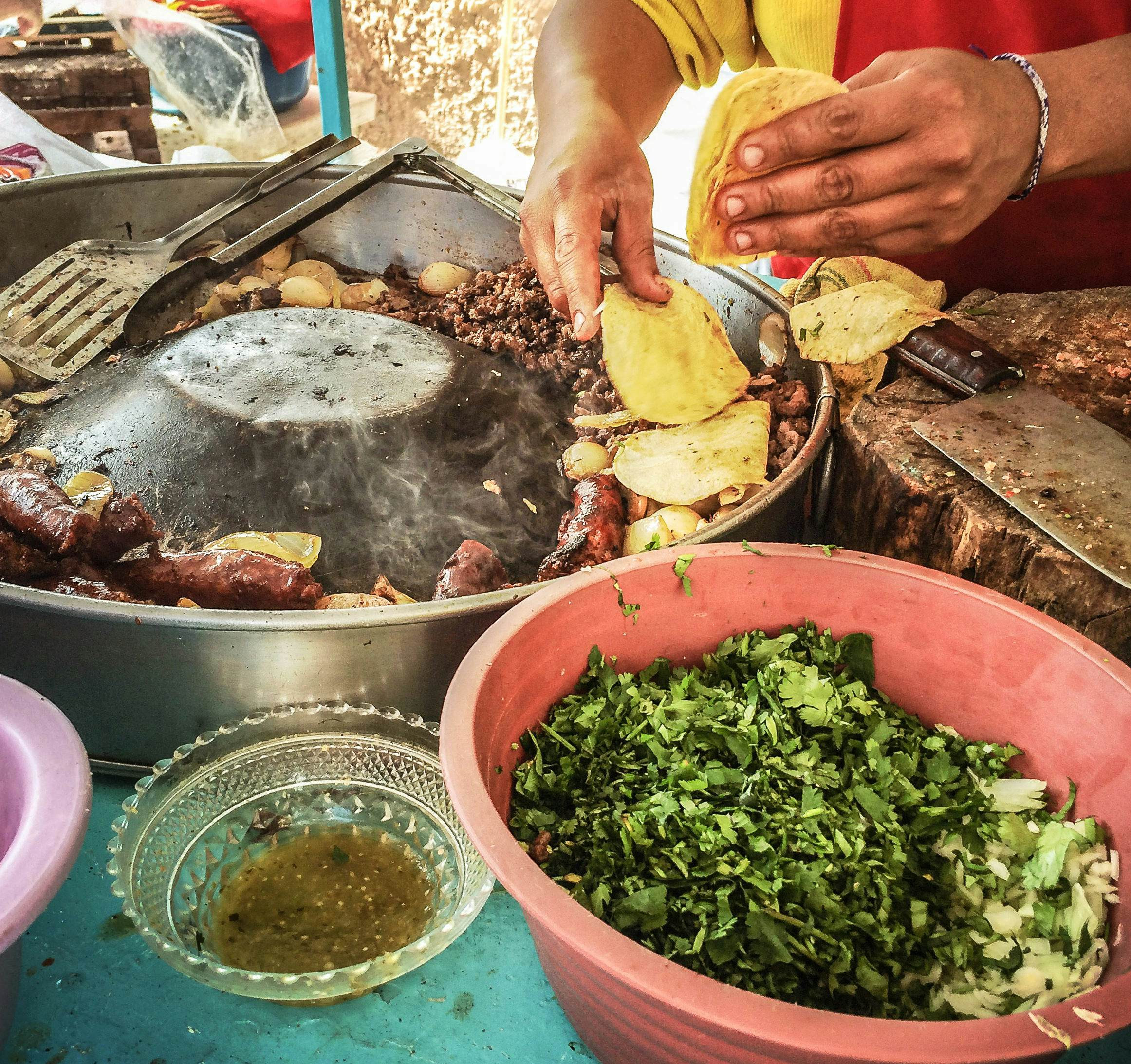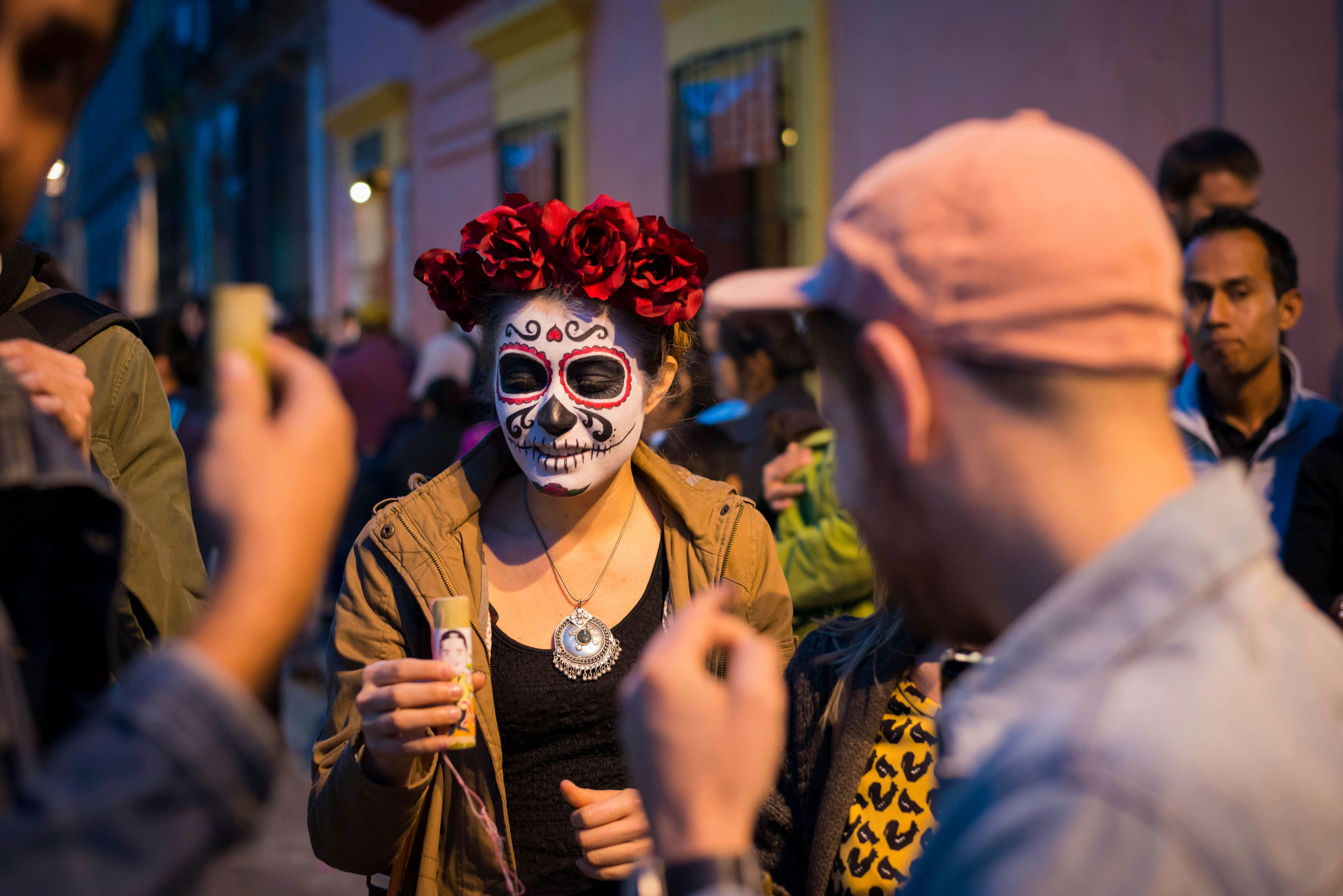How do Mexicans celebrate the Day of the Dead, especially within the LGBTQ+ community? Gaymexico.net explores this vibrant tradition, showcasing how it honors departed loved ones with unique cultural expressions. Discover the inclusive celebrations and heartfelt customs that make Día de los Muertos a special time for remembrance and community in Mexico, focusing on LGBTQ+ inclusion. Explore unique traditions, cultural significance, and community spirit.
1. What is Día de los Muertos and Its Significance?
Día de los Muertos, or the Day of the Dead, is a deeply heartfelt and ancient Mexican celebration where people remember and honor loved ones who have passed away. According to UNESCO, its cultural importance is such that it is recognized as a unique celebration of death and a core part of the Mexican experience. This celebration blends indigenous traditions with Catholic rituals, evolving since the arrival of Spanish colonizers to include elements of both.
Día de los Muertos is more than just a day of mourning; it’s a vibrant reminder of the fleeting nature of life and a celebration of those who have lived. It’s a time when families come together to share food, music, and stories, creating a welcoming atmosphere where no one is forgotten. Each region of Mexico celebrates in its own unique way, adding to the richness and diversity of the tradition.
2. When Does Día de los Muertos Take Place?
Día de los Muertos is celebrated on November 1st and 2nd, though preparations and some regional celebrations can begin in mid to late October. November 1st is known as Día de los Inocentes (Day of the Innocent Ones) or Día de los Angelitos (Day of the Little Angels), focusing on children who have died. November 2nd is Día de los Muertos or Día de los Difuntos (Day of the Departed), dedicated to adults. Originally celebrated in August, the dates were changed to coincide with the Catholic holidays of All Saints’ Day and All Souls’ Day.
This alignment with Catholic holidays integrates prayer and remembrance for the deceased, blending the ancient indigenous beliefs with Catholic traditions. The two-day celebration allows for a comprehensive honoring of both young and adult spirits, ensuring that all are remembered and celebrated during this special time.
3. What are Ofrendas and How Are They Set Up?
Ofrendas, or altars, are central to Día de los Muertos celebrations, serving as a focal point for honoring deceased loved ones. Starting in mid-October, many Mexicans set up these altars in their homes and businesses, creating displays that range from simple to elaborate, multi-level arrangements. All ofrendas share common elements: photos of the deceased, their favorite food and drinks, and small, cherished items such as toys, nail polish, or books.
Commonly included items are candles, flowers, crucifixes, and colorful images of saints. These ofrendas symbolize a family’s remembrance and serve as a welcoming place for the spirits of their loved ones to return during this special time. For many, the ofrenda is more than just a memorial; it is a homecoming, a tangible representation of the bond between the living and the dead.
 An ofrenda (altar) is set up with photos, flowers, and candles to honor deceased loved ones during Day of the Dead celebrations in Mexico.
An ofrenda (altar) is set up with photos, flowers, and candles to honor deceased loved ones during Day of the Dead celebrations in Mexico.
4. Why is Visiting the Cemetery an Important Part of Día de los Muertos?
Visiting the cemetery is a significant tradition during Día de los Muertos, with Mexicans cleaning and decorating the graves of their loved ones with flowers and candles. Regardless of regional variations, this act of remembrance is a universal practice. The atmosphere is often festive and respectful, with families bringing chairs and blankets to spend the day, and sometimes the night, sharing food, drinks, and stories.
Live music is common, with musicians moving through the cemeteries, playing the favorite tunes of the deceased at each gravesite. This communal gathering transforms the cemetery into a vibrant space filled with love and remembrance, reinforcing the connection between the living and the departed. It is a time of unity, where families come together to honor and celebrate the lives of those they have lost.
 Gravesites are illuminated with candlelight and decorated with flowers during Day of the Dead celebrations in San Andres.
Gravesites are illuminated with candlelight and decorated with flowers during Day of the Dead celebrations in San Andres.
5. What is the Significance of Marigolds in Día de los Muertos Celebrations?
Marigolds, known as cempasúchil in Mexico, are considered the official flower of the dead and hold significant importance in Día de los Muertos celebrations. Native to central Mexico, these bright orange flowers have been used since ancient times. It was believed that their vivid hue and musky fragrance helped guide spirits back to their homes.
Today, marigolds remain a popular choice for ofrendas and gravesites, especially in central and southern Mexico. Cemeteries transform into seas of orange, and marigold petals are often strewn before altars, honoring ancient beliefs and adding a vibrant, fragrant element to the celebrations. The marigold is a powerful symbol, connecting the living with the spirits of the dead through its color and scent.
6. What Foods are Traditionally Prepared for Día de los Muertos?
Food is an essential part of Día de los Muertos, with ofrendas featuring the favorite foods of the deceased. These dishes represent not only personal preferences but also the diverse regional cuisines of Mexico. For example, mole negro (a slow-cooked sauce made with hoja santa chili, chocolate, onions, and garlic, often served with chicken) is popular in Oaxaca, while pozole (traditional Mexican stew with meat, shredded cabbage, chili peppers, onion, garlic, radishes, avocado, salsa, and lime) is common in Mexico City. In Yucatán, calabaza en tacha (candied pumpkin cooked in sugar cane syrup) is a traditional treat.
One food that is almost universally present is pan de muerto (bread of the dead), a spongy, egg-based bread sprinkled with sugar. It comes in a round loaf with bone-shaped decorations, symbolizing the cycle of life and death. Bakeries begin selling pan de muerto a week or two before Día de los Muertos, both for use on ofrendas and as a sweet treat to enjoy with coffee, hot cocoa, or atole (a hot, corn-based drink).
 A street vendor prepares traditional foods for Day of the Dead celebrations in Mexico City.
A street vendor prepares traditional foods for Day of the Dead celebrations in Mexico City.
7. How Did La Catrina Become a Prominent Symbol in Día de los Muertos?
Skeleton imagery, particularly La Catrina, has become increasingly prevalent in Día de los Muertos celebrations. La Catrina is a high-society skeleton sporting a feather boa and an oversized Victorian-era hat, created in the early 1900s by satirical cartoonist José Guadalupe Posada. She embodies the idea that death spares no one, regardless of wealth or status.
The image of La Catrina was later integrated into the national psyche through the art of Mexican muralist Diego Rivera and others. Today, celebrations across Mexico highlight this iconic skeleton through paper mâché décor, candy skulls for ofrendas, and skeleton imagery in signage and papel picado (colorful, perforated banners) that decorate the streets. During parades and processions, many people paint their faces to resemble skulls and dress in colorful regional costumes or Victorian-era finery, with face painters readily available to transform faces into skulls.
8. What Special Events and Festivities Take Place During Día de los Muertos?
While Día de los Muertos is traditionally a family-oriented celebration, larger-scale festivities are increasingly common across Mexico, ranging from cemetery processions and city-wide parades to street fairs with food vendors and neon-lit rides. Some standout celebrations include:
- Mexico City’s Desfile de Alebrijes (Parade of Spirit Guides): This parade kicks off in the Zócalo and winds through the city streets, featuring fantastical creatures, elaborate floats, and thousands of people dressed in skeleton costumes.
- Mixquic’s La Alumbrada (The Lighting): Southeast of Mexico City, the streets of Mixquic are adorned with Day of the Dead murals. For three nights, the town goes dark except for the cemetery, where thousands of candles light up the intricately decorated gravesites.
- Janitzio Island, Michoacán: In the middle of Lake Pátzcuaro, thousands gather to watch the arrival of flower-covered, candlelit canoes, initiating a nightlong vigil/party at the town cemetery.
- Oaxaca City’s Week of Festivities: Oaxaca City’s week-long celebration includes dance and music performances, graveyard tours, and a “best altar” competition.
- Mérida’s Paseo de las Ánimas (Procession of the Souls): Over 50,000 people attend Mérida’s procession, most with skeleton face paint and traditional Yucatecan dress, walking two miles from the main cemetery to the town center, passing hundreds of candlelit ofrendas along the way.
 People in Oaxaca City celebrate Day of the Dead with vibrant costumes and traditional music.
People in Oaxaca City celebrate Day of the Dead with vibrant costumes and traditional music.
9. How Can LGBTQ+ Individuals Participate in Día de los Muertos?
Día de los Muertos is an inclusive celebration, and LGBTQ+ individuals can participate fully and authentically. The core of the tradition is honoring loved ones, and this extends to all members of the community. Here’s how LGBTQ+ individuals can engage with Día de los Muertos:
- Creating Ofrendas for LGBTQ+ Loved Ones: Build altars that celebrate the lives and memories of LGBTQ+ friends and family who have passed away. Include photos, favorite foods, and items that represent their unique personalities and contributions.
- Celebrating LGBTQ+ Icons: Honor LGBTQ+ figures who have made a significant impact. Include images and mementos that recognize their achievements and legacy.
- Participating in Community Events: Join local Día de los Muertos celebrations, parades, and cultural events. Many cities host inclusive events that welcome participation from all members of the community.
- Expressing Identity Through Costume and Art: Use traditional skeleton face paint and costumes to express personal identity and celebrate LGBTQ+ culture. Incorporate symbols and colors that reflect pride and solidarity.
- Sharing Stories and Memories: Share stories and memories of LGBTQ+ loved ones with family and friends, keeping their spirits alive and honoring their contributions.
- Supporting LGBTQ+-Friendly Businesses: Patronize businesses that support the LGBTQ+ community during Día de los Muertos celebrations. This helps to create a welcoming and inclusive environment for everyone.
- Educating Others: Use Día de los Muertos as an opportunity to educate others about LGBTQ+ history and culture. Share information about prominent figures and important milestones in the LGBTQ+ community.
- Creating Inclusive Spaces: Organize or participate in events that promote inclusivity and welcome LGBTQ+ individuals and allies. This helps to create a sense of belonging and community during this special time.
By participating in these ways, LGBTQ+ individuals can fully embrace Día de los Muertos, honoring their loved ones and celebrating their identities within the rich cultural tradition of Mexico.
10. What Are Some Considerations for LGBTQ+ Travelers Attending Día de los Muertos in Mexico?
For LGBTQ+ travelers attending Día de los Muertos in Mexico, it’s essential to be aware of local customs and attitudes while fully embracing the celebrations. While Mexico is generally becoming more accepting, attitudes can vary by region. Here are some considerations to ensure a safe and enjoyable experience:
- Research LGBTQ+ Friendliness of Destinations: Some cities, like Mexico City and Puerto Vallarta, are known for being more LGBTQ+ friendly. Research your destination to understand local attitudes and resources. Gaymexico.net offers guides and information on LGBTQ+ friendly locations in Mexico.
- Be Aware of Public Displays of Affection (PDA): While attitudes are evolving, public displays of affection may still attract unwanted attention in some areas. Exercise discretion and be mindful of local customs.
- Check Local Laws and Regulations: Familiarize yourself with local laws and regulations regarding LGBTQ+ rights. While Mexico has made progress in legal protections, it’s good to be informed.
- Connect with Local LGBTQ+ Community: Reach out to local LGBTQ+ organizations or community centers for information and support. They can provide valuable insights and resources for LGBTQ+ travelers.
- Use LGBTQ+-Friendly Accommodations and Services: Choose accommodations and services that are known for being LGBTQ+ friendly. This can help ensure a comfortable and welcoming experience.
- Attend Inclusive Events: Look for Día de los Muertos events that are specifically promoted as inclusive and welcoming to the LGBTQ+ community. These events often provide a safe and supportive environment.
- Be Respectful of Local Traditions: While participating in Día de los Muertos, be respectful of local traditions and customs. Show appreciation for the cultural significance of the celebration.
- Stay Informed and Vigilant: Stay informed about any potential safety concerns or issues affecting the LGBTQ+ community in your destination. Be vigilant and take precautions to protect yourself and your belongings.
- Share Your Experiences: Share your experiences with other LGBTQ+ travelers to help build a network of information and support. This can help others feel more confident and informed when traveling to Mexico.
- Support LGBTQ+ Rights: Consider supporting LGBTQ+ rights organizations in Mexico through donations or volunteer work. This can help advance equality and inclusion for LGBTQ+ individuals in the country.
By taking these considerations into account, LGBTQ+ travelers can have a meaningful and enjoyable experience celebrating Día de los Muertos in Mexico, while also staying safe and respecting local customs.
FAQ: Celebrating Día de los Muertos
1. What is the primary purpose of Día de los Muertos?
Día de los Muertos primarily serves to honor and remember deceased loved ones, celebrating their lives and the memories shared with them.
2. How long does the Día de los Muertos celebration last?
The main celebration spans two days, November 1st and 2nd, though preparations may begin weeks in advance.
3. What are some essential elements of an ofrenda?
Essential elements include photos of the deceased, their favorite foods and drinks, candles, flowers (especially marigolds), and personal items they cherished.
4. Why are marigolds used during Día de los Muertos?
Marigolds are believed to attract spirits with their vibrant color and fragrance, guiding them back to their homes.
5. What is pan de muerto and its significance?
Pan de muerto is a traditional bread decorated with bone-shaped designs, symbolizing the cycle of life and death, and is a staple food during the celebration.
6. Who was La Catrina and how did she become a symbol of Día de los Muertos?
La Catrina was a satirical cartoon character created by José Guadalupe Posada, representing that death spares no one, regardless of social status, and has become a prominent symbol through art and popular culture.
7. What are some popular events during Día de los Muertos in Mexico?
Popular events include parades, cemetery processions, street fairs, and special ceremonies such as La Alumbrada in Mixquic and the Paseo de las Ánimas in Mérida.
8. How can LGBTQ+ individuals participate in Día de los Muertos?
LGBTQ+ individuals can participate by creating ofrendas for LGBTQ+ loved ones, celebrating LGBTQ+ icons, and participating in inclusive community events, expressing their identity through costumes and art.
9. What should LGBTQ+ travelers consider when attending Día de los Muertos in Mexico?
LGBTQ+ travelers should research the LGBTQ+ friendliness of their destination, be aware of public displays of affection, connect with local LGBTQ+ communities, and choose LGBTQ+-friendly accommodations and services.
10. Where can I find more information about LGBTQ+ travel in Mexico?
Gaymexico.net provides resources, guides, and information on LGBTQ+ friendly destinations, events, and accommodations in Mexico.
Planning your trip to Mexico for Día de los Muertos? Visit Gaymexico.net for LGBTQ+ travel guides, event listings, and community connections to make your experience safe, enjoyable, and unforgettable. Explore our resources now! Address: 3255 Wilshire Blvd, Los Angeles, CA 90010, United States. Phone: +1 (213) 380-2177. Website: gaymexico.net.
